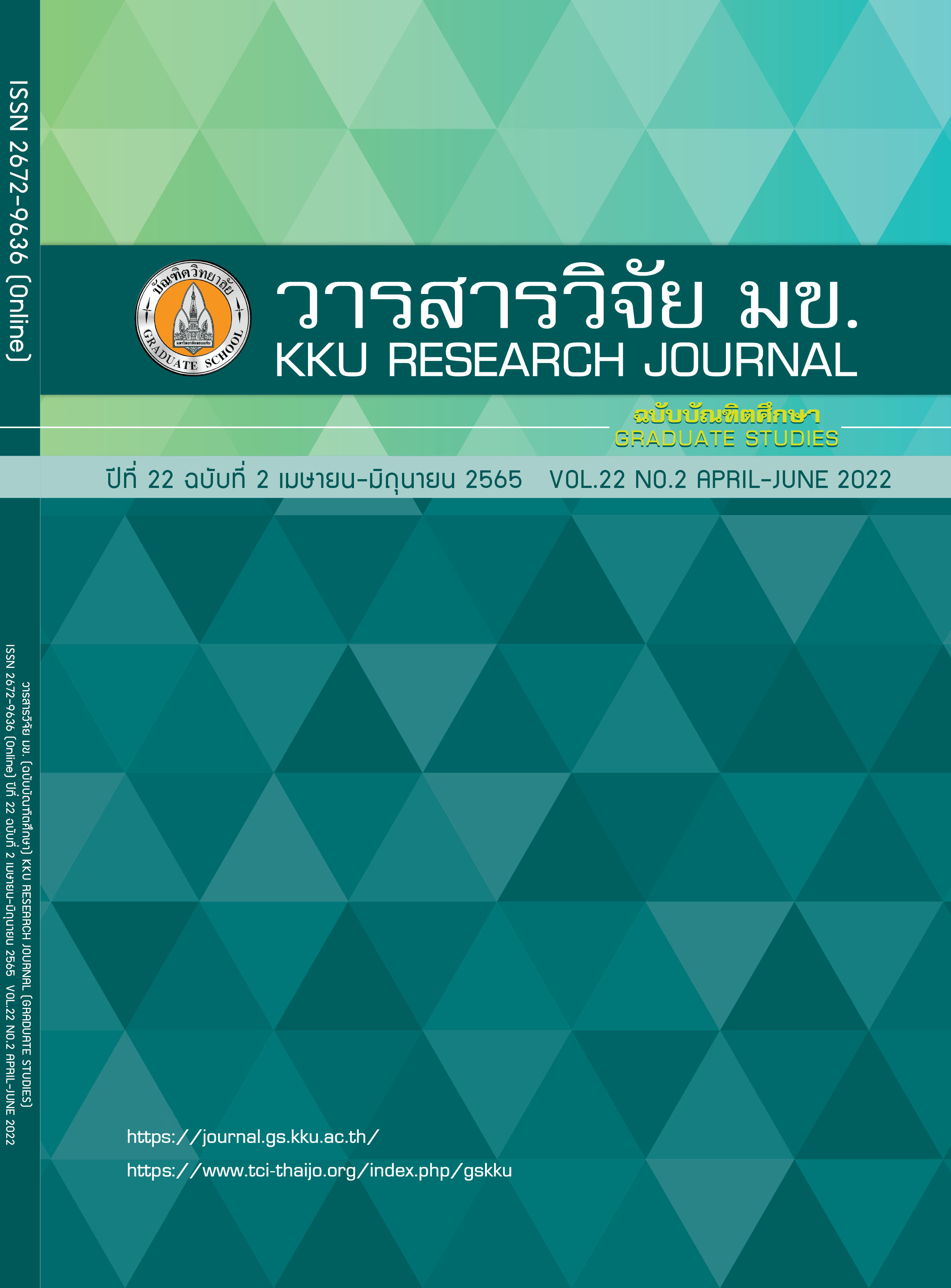Lateral Movement of Khon Kaen Loess
Keywords:
Horizontal displacement, The ratio between horizontal displacement and vertical displacementAbstract
Loess in Khon Kaen University was a mixture between silt and clay. Then it was in dry condition can bear weight well, but then moisture content increase load capacity will decrease and collapse. Then it used in construction will consider horizontal displacement and vertical displacement. This research was studied the horizontal displacement and the ratio between horizontal displacement and vertical displacement () of Khon Kaen Loess soil in the field under natural and wet conditions. The four inclinometer tubes 6.0 m in length were installed (4 m in loess and 2.0 m in laterite). Then two holes are excavated away from the inclinometer tube 0.5 m. The first hole, which was 2.0 x 2.0 x 1.2 m, was used to install a footing. The second hole was a vertical cut of 4.5 meters in depth. Then the load was applied via the footing size 1.2 x 1.2 x 0.25 m and 1.2 m in depth. The results found that the settlement occurred under the stress of 20 t/sq.m were 10.66 and 75.38 mm under natural and wet conditions respectively, and moisture content under natural and wet were 5.8 and 20.4 respectively. Moreover, the horizontal displacement was the greatest at a depth of 1.5 m from the soil surface, 30 cm below the footing depth. But the horizontal displacement at a depth of 4.0 to 6.0 m was relatively constant because the inclinometer tube was in a laterite layer in both natural and wet conditions. The maximum horizontal displacement under the stress of 20 t/sq.m is 4.47 mm in natural condition and 17.51 mm in wet condition. The result presents that horizontal displacement at wet conditions was approximately 3-4 times greater than at natural conditions. Besides, the () of wet conditions was higher than natural conditions. The maximum () was 0.52 in wet condition, and the () at the failure of wet condition was 0.39. The maximum () was 0.419 in natural condition.
References
Thasnanipan N, et al. Wall movement induced by underground structure construction. The 12th National Convention on Civil Engineering, Amarin Lagoon Hotel, Phitsanulok, 2-4 May 2007. Thai.
Udomchoke. Origin and Enginerring Characteristics of the Problem Soil in the Khorat Basin. Northeastern Thailand. Ph.D. dissertarion. Asian Institue of Technology. Bangkok, Thailand,1991. Thai.
Sivapriya SV, Gandhi SR. Effect of lateral movement of soil in Diaphragm wall-A case Study Effect of lateral movement of soil in Diaphragm wall - A case Study. 2018;(December).
Thongpong R. The Behavior of Shallow Foundation Size on Khon Kaen Loess [MEng thesis]. Khon Kaen: Khon Kaen University; 2020. Thai.
Piyasawat K. A Study of Shallow Foundation Khon Kaen Loess Various Depth by Field and Laboratory Tests [MEng thesis]. Khon Kaen: Khon Kaen University; 2020. Thai
Balasubramaniam1 AS, Phienwej N, Gan CH, Oh YN. Piled Foundations and Basement Excavations for Tall Buildings in Bangkok Subsoils. In: Malaysian Geotechnical Conference, January 2004, pp. 1-19.
Downloads
Published
Issue
Section
License
Copyright (c) 2022 KKU Research Journal (Graduate Studies)

This work is licensed under a Creative Commons Attribution-NonCommercial-NoDerivatives 4.0 International License.



